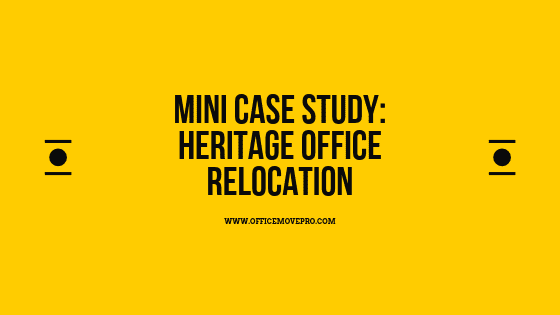Are you thinking about moving your business or non-profit office into a heritage building?
Wondering what the experience has been like for others?
Here we give you a look into how we helped one non-profit organization successfully move from their home of 13 years to a 4-story heritage home – and offer tips on moving your own office into a new, old building.
Moving the PALS Autism Society
Step 1: Needs Assessment
The first step in any move is assessing the needs of your organization and everyone it serves. In the case of the PALS Autism Society (PALS), the current school was at capacity and unable to meet its growing demand for enrolment.
6 years of focused searching allowed PALS to find the most suitable location for their students, and to expand their programming. Now settled in their permanent home, PALS staff and students can realize all of the possibilities before them.
Heritage buildings have a unique way of inspiring people – whether by providing a sense of warmth, gratitude, reverence, or strength – and according to a scientific study cited by Time, this sort of emotional connection to one’s workplace is incredibly motivating.
Reinventing and repurposing heritage spaces helps nurture communities as well as the businesses that make them home. Improving cultural well-being aligns closely with the values of the PALS Autism Society, and so, is reflected in the choice of location for their school.
So what can you learn from the extensive search and ultimate decision PALS undertook?
Learning
- Focus on your clients, employee experiences, and work opportunities
- Find a workspace that will motivate your team
- Choose an office environment that reflects the values of your organization
But moving into a heritage building requires special consideration.
If your building is a registered heritage site, there may be restrictions on anything from major renovations to paint colours, and obtaining necessary approvals for this work can take longer than typical permits. So you’ll need to factor this into your timeline. You’ll also need to prepare for the unexpected. Heritage sites are especially prone to surprise discoveries during construction, which can lead to additional costs and relocation delays.
Step 2: Choosing a Relocation Company
Early in the process, it will be necessary to find a professional moving company to relocate your business. You’ll need an experienced team, familiar with the attributes that give many historic buildings their signature charm. For example, your movers may have to account for very narrow staircases and doorways, awkward corners, small elevators – or none at all – and historic materials like trim work, fixtures and flooring that are not easily repaired or replaced.
Your movers will need proper equipment and and trained staff to undertake your project. So be sure and review the full scope of your relocation with all candidates before making your selection. Include a building tour, and if possible, hire a company with experience in moving historical buildings.
I interviewed 9 different moving companies and Office Move Pro stood out above them all, making my decision easy. In what felt like record-breaking time, they tirelessly moved up and down 4 stories moving everything into place just the way we wanted it.
Will your business thrive in a heritage building?
When you’re ready to take that first step, our team with walk you through the entire process of getting there.
ShareTweetShareShare


